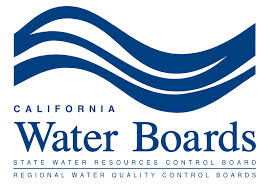
Webinar: Citizen Science Works for the Recovery of a Wild & Scenic River, its Fisheries, and its Communities
California Water Quality Monitoring Collaboration Network
Citizen Science & Watershed Stewardship Webinar Series
Join the California Water Quality Monitoring Collaboration Network along with Pat Higgins from the Eel River Recovery Project for the presentation "Citizen Science Works for the Recovery of a Wild & Scenic River, its Fisheries, and its Communities". Please join us on Thursday February 16, 2017 from 11:30 AM -12:30 PM (PST). Please see the instructions below to join the webinar. There is no registration for this free webinar.
Topic: Citizen Science Works for the Recovery of a Wild & Scenic River, its Fisheries, and its Communities
The Eel River Recovery Project (ERRP) formed in 2011 to serve the community of the Eel River watershed by helping citizen monitors gauge the health of the watershed and to share information back with their neighbors. The foundation of citizen science creates a trusted framework, so that communities can assess the health of their nearby streams and determine whether efforts to restore the Eel River ecosystem are working.
ERRP monitoring has included water temperature, flow and cyanobacteria. Since 2012, ERRP has acquired grants and built partnerships with other community groups, academic institutions, private entities, agencies and Indian Tribes to acquire needed information. Data are used to test hypotheses based on community concerns. For example, citizens felt that tributary and river flow were diminishing and water temperature increasing due to expanding cannabis farming after the passage of Proposition 215 in 1995. A grant from the State Water Resources Control Board in 2015 allowed comprehensive analysis of temperature trends that partially confirmed this hypothesis. ERRP has actively supported University of California Berkeley annual basin-wide cyanobacteria studies since 2013. The hypothesis being tested in the latter case is that diminishment of flow and increased nutrients have pushed the Eel River ecosystem past a tipping point where it is dominated by sometimes toxic cyanobacteria instead of beneficial green algae species. www.eelriverrecovery.org
